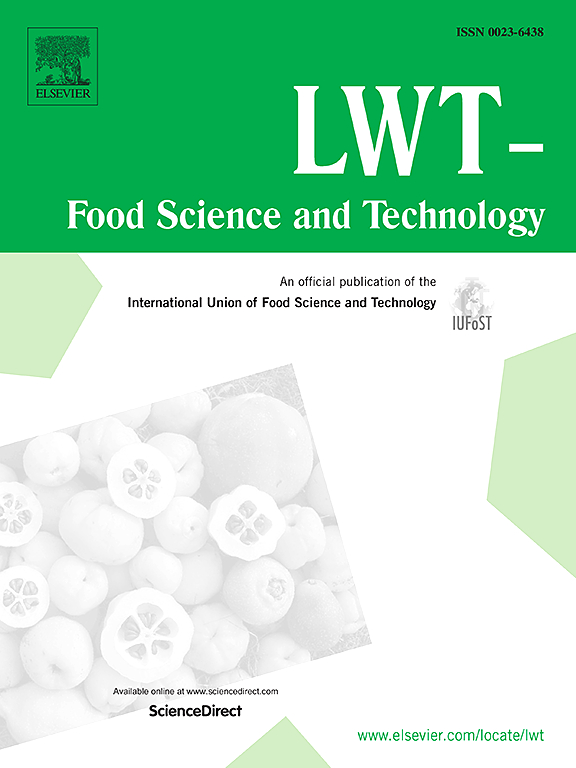Influence of potato starch on the 3D printing of senior-friendly foods enriched with oyster powder
IF 6
1区 农林科学
Q1 FOOD SCIENCE & TECHNOLOGY
引用次数: 0
Abstract
Oysters provide essential amino acids that are required for muscle synthesis. However, their consumption is often limited due to undesirable textures. This study explored the use of oyster powder (OP) in 3D printing ink to increase accessibility and develop senior-friendly food. Oyster printing inks (OPIs) were formulated by mixing OP with varying concentrations of potato starch (PS; 0, 5, 10, and 20 g/hg ink; OPI0, OPI5, OPI10, and OPI20) and heating at 80 °C for 30 min. OPIs exhibited shear-thinning behavior, making them suitable for extrusion-based 3D printing. OP particles were distributed within a continuous structure formed by starch molecules leached from PS granules without chemical bonds. As PS content increased, swollen PS granules enhanced structural rigidity and improved printability owing to higher G'. However, excessive PS led to increased viscosity, which reduced the flowability. OPI10, identified as the optimal formulation for printability, was used to print oyster hash browns (OHBs) with 40, 60, and 80 % infill densities. OHBs were then evaluated for senior-friendly food suitability, focusing on texture properties such as hardness, cohesiveness, and adhesiveness. This study highlights the potential of 3D printing for high-protein texture-modified foods tailored to seniors, providing innovative solutions for personalized nutrition and food customization.
马铃薯淀粉对富含牡蛎粉的老年人友好食品3D打印的影响
牡蛎提供肌肉合成所必需的氨基酸。然而,由于不受欢迎的纹理,它们的消费往往受到限制。本研究探索在3D打印油墨中使用牡蛎粉(OP)来增加可及性,开发老年人友好食品。牡蛎印刷油墨(OPIs)是通过将OP与不同浓度的马铃薯淀粉(PS;0、5、10、20 g/hg油墨;OPI0、OPI5、OPI10和OPI20),并在80°C下加热30分钟。opi表现出剪切变薄的行为,使其适合基于挤压的3D打印。OP颗粒分布在由淀粉分子从PS颗粒中浸出形成的连续结构中,没有化学键。随着PS含量的增加,膨胀的PS颗粒由于G′增大,结构刚度增强,印刷适性改善。然而,过多的PS会导致粘度增加,从而降低流动性。OPI10被确定为可印刷性的最佳配方,用于打印填充密度为40%,60%和80%的牡蛎哈希褐色(ohb)。然后对ohb的老年人友好食品适用性进行评估,重点关注硬度、内聚性和粘附性等质地特性。这项研究强调了3D打印在为老年人量身定制的高蛋白质地改性食品方面的潜力,为个性化营养和食品定制提供了创新的解决方案。
本文章由计算机程序翻译,如有差异,请以英文原文为准。
求助全文
约1分钟内获得全文
求助全文
来源期刊

LWT - Food Science and Technology
工程技术-食品科技
CiteScore
11.80
自引率
6.70%
发文量
1724
审稿时长
65 days
期刊介绍:
LWT - Food Science and Technology is an international journal that publishes innovative papers in the fields of food chemistry, biochemistry, microbiology, technology and nutrition. The work described should be innovative either in the approach or in the methods used. The significance of the results either for the science community or for the food industry must also be specified. Contributions written in English are welcomed in the form of review articles, short reviews, research papers, and research notes. Papers featuring animal trials and cell cultures are outside the scope of the journal and will not be considered for publication.
 求助内容:
求助内容: 应助结果提醒方式:
应助结果提醒方式:


